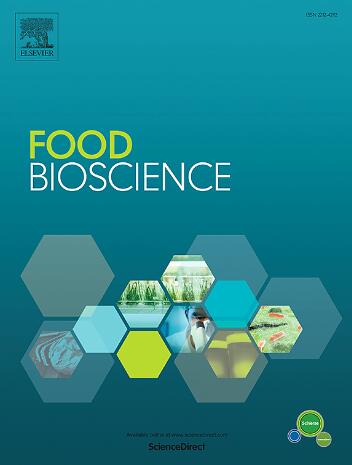Characterization, mechanism, and application of aldolase: A Patulin-degrading enzyme from Kluyveromyces Marxianus YG-4
IF 4.8
1区 农林科学
Q1 FOOD SCIENCE & TECHNOLOGY
引用次数: 0
Abstract
Patulin (PAT) is a mycotoxin produced by Penicillium species, which mainly contaminates fruit and fruit-derived products, posing a serious threat to food safety. A novel heat-resistant PAT degrading enzyme, aldolase (PATY, 16.9 kDa), was isolated and identified from Kluyveromyces marxianus YG-4 (K. marxianus YG-4) isolated from Kefir grain. The whole genome sequencing of K. marxianus YG-4, heterologous expression, purification, and bioinformatics were utilized to study the properties of PATY. PATY showed the highest catalytic efficiency (22.8 U/mg) towards PAT at pH8.0 and 35 °C, and maintained over 80 % relative activity at 70 °C. Bioinformatics analysis revealed that the catalytic reaction is achieved through the hydrogen bonding between the amino acids His19, Arg22, Tyr57, Lys60, and His61 of PATY and PAT. PAT was degraded by PATY into desoxypatulinic acid (DPA), which has no cytotoxicity. PATY can effectively degrade PAT in apple juice, significantly increasing the content of total phenolic and improving the quality of apple juice. In addition, PATY can also degrade Ochratoxin A (OTA, 7.20 %), Zearalenone (ZEN, 31.46 %) and Aflatoxin B1 (AFB1, 32.57 %) to a certain extent. In summary, PATY can effectively degrade PAT in contaminated apple juice. PATY provides a feasible and promising solution for achieving PAT detoxification of fruit juice and improving its quality and safety, and is also a potential candidate for simultaneously degrading multiple fungal toxins.

求助全文
约1分钟内获得全文
求助全文
来源期刊

Food Bioscience
Biochemistry, Genetics and Molecular Biology-Biochemistry
CiteScore
6.40
自引率
5.80%
发文量
671
审稿时长
27 days
期刊介绍:
Food Bioscience is a peer-reviewed journal that aims to provide a forum for recent developments in the field of bio-related food research. The journal focuses on both fundamental and applied research worldwide, with special attention to ethnic and cultural aspects of food bioresearch.
 求助内容:
求助内容: 应助结果提醒方式:
应助结果提醒方式:


